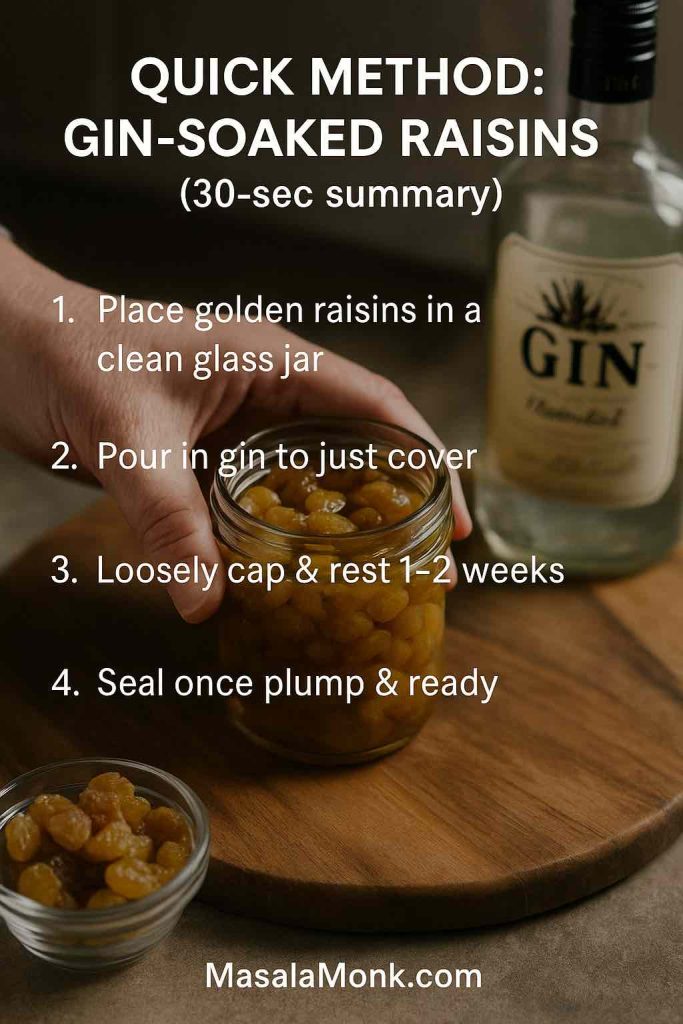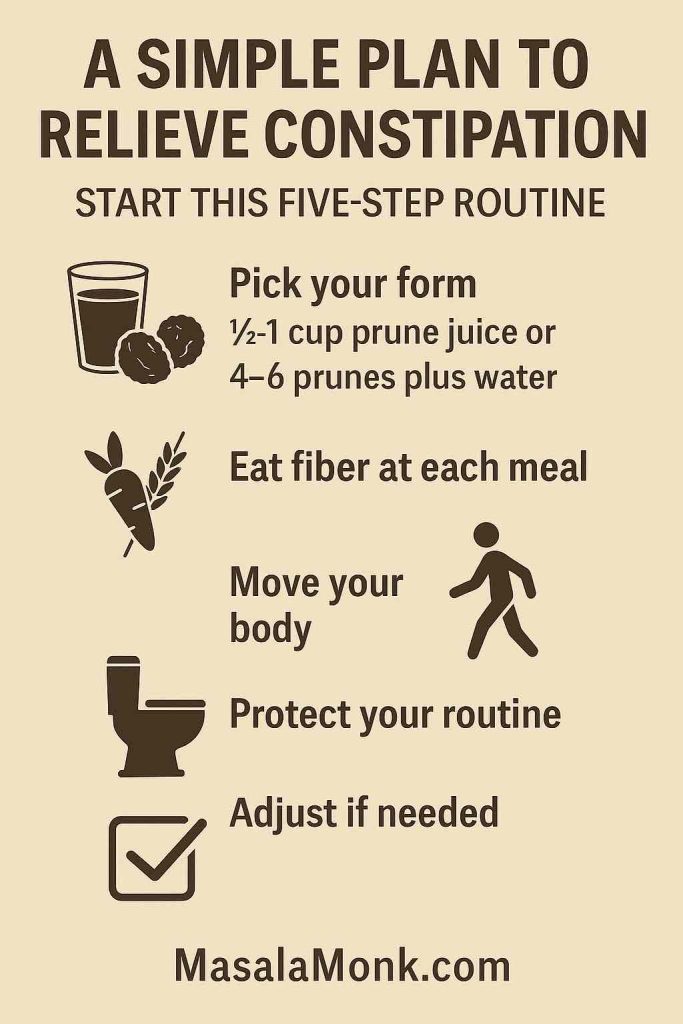
The mesomorph body type is often described as naturally athletic—broader shoulders, a relatively narrow waist, and a frame that seems to “take” to training. Nevertheless, body-type labels are tendencies, not destinies. If you want a concise orientation to how these categories are typically described, this primer on somatotypes sets the scene; then, rather than overfitting rules to a label, build progress using the evidence-led ACSM progression models. With that perspective in mind, below you’ll find a complete, practical playbook tailored to the mesomorph body type—including nutrition, training templates, cardio, recovery, and troubleshooting for plateaus.
The two other body types you might want to read more about are:
- Endomorph Body Type: Diet & Workout Plan for Women & Men
- Ectomorph Body Type: Meaning, Workouts, Diet & Weight Gain
What the Mesomorph Body Type Looks Like (and Why It’s Only a Starting Point)
Typically, people who align with the mesomorph body type present a solid, muscular build, make steady strength gains with sensible programming, and tolerate both training volume and dietary carbohydrate reasonably well. Even so, many readers identify as blends—“ecto-meso” or “endo-meso.” That’s perfectly fine. Because the methods here are grounded in outcomes, not identity labels, they work across that spectrum. Moreover, we’ll show you exactly how to adjust when progress stalls, so your plan remains responsive rather than rigid.
Also read: 3 Somatotypes: Ectomorph, Mesomorph, Endomorph
Nutrition for the Mesomorph Body Type: Targets, Food Matrix & Adherence
Start With Calories, Then Iterate Intelligently
First, set calories to match your goal and adjust every two weeks based on trends:
- Fat loss: body weight (lb) × 10–12
- Recomp/maintenance: × 12–14
- Muscle gain: × 15–17
To make those numbers concrete right away, run them through our macro calculator and save your initial targets. After a fortnight, evaluate the trend—not a single weigh-in—and nudge only one variable at a time.
Also Read: The Science of Protein: Maximizing Muscle Growth and Recovery
Lock Protein First, Then Shape Carbs and Fats Around Training
Protein protects lean mass in a deficit and supports growth in a surplus. A large synthesis suggests roughly 1.6 g/kg/day covers the hypertrophy benefit for most lifters before returns diminish; see this landmark meta-analysis. Meanwhile, during more aggressive cuts in lean, resistance-trained folks, higher intakes relative to fat-free mass (≈ 2.3–3.1 g/kg FFM) better defend muscle, as shown by Helms et al..
Day to day, keep protein convenient and consistent. Eggs, Greek yogurt, tofu/tempeh, fish, poultry, lean beef, and lentils cover most scenarios. For quick, real-world anchors, check the protein in two boiled eggs or compare with three scrambled eggs.
Carbs vs Fats for the Mesomorph Body Type: Fuel the Work
Keep protein steady, then flex carbs and fats to hit your calories. On lifting days, place more of your carbs before and after workouts; on rest or easy-cardio days, slide carbs down and nudge fats up slightly. Pragmatically, that’s the spirit of periodized nutrition: fuel the work that matters while keeping overall intake aligned with your goal.
Also Read: How to Eat 100 Grams of Protein a Day
The Mesomorph Food Matrix (Female & Male)
- Proteins: eggs, Greek yogurt, cottage cheese, tofu/tempeh, fish, chicken, lean beef, lentils
- Carbs (mostly high-fiber): oats, potatoes, rice, quinoa, whole-grain wraps/bread, beans, fruit
- Fats: extra-virgin olive oil, avocado, nuts/seeds, fatty fish
- Veg: leafy greens, crucifers, and colorful mixed veg for volume and micronutrients
For adherence—and, importantly, satiety—a modest daily handful of nuts can help; this guide to high-impact nuts for weight management is a useful reference while you build shopping lists.
Sample Meal Templates for the Mesomorph Body Type (Scale Portions to Your Calories)
Female—fat-loss day (~1,700–1,900 kcal)
Breakfast: Greek yogurt (~200 g) with oats (~40 g) and berries
Snack: Apple with ~25 g almonds
Lunch: Chicken–quinoa–veg bowl (~120 g cooked chicken; ~120 g cooked quinoa)
Pre-workout: Banana plus 20–25 g whey
Dinner: Salmon (120–150 g), potatoes (~200 g), large salad with olive-oil dressing
Male—recomp day (~2,400–2,600 kcal)
Breakfast: 3 eggs + 2 whites, whole-grain toast, spinach
Snack: Cottage cheese (~200 g) with pineapple
Lunch: Lean beef & rice bowl (150–180 g beef; ~200 g cooked rice; veg)
Pre-workout: Oats (~60 g) with 25–30 g whey
Dinner: Chicken (180–200 g), sweet potato (~250 g), broccoli with olive oil
Additionally, track more than the scale. In practice, waist measurements, weekly photos, and gym numbers tell a clearer story. This concise body-fat guide helps calibrate expectations as the mesomorph body type changes composition.
Training for the Mesomorph Body Type: Principles, Progression & Templates
Principles First: What Drives Results Reliably
Progressive overload—small, steady jumps in load or reps with tidy technique—remains the backbone, precisely as recommended by the ACSM progression models. Most people with a mesomorph body type thrive on four lifting days per week, accumulating 8–15 hard sets per muscle across those sessions. Session length of 60–75 minutes is plenty when rests are purposeful and assistance work stays efficient.
Mesomorph Body Type—Female 8-Week Template (Strength + Shape)
Split: Upper A / Lower A / Upper B / Lower B (+ optional accessory circuit)
- Upper A: Horizontal press, row, overhead press, pulldown, lateral raises, core
- Lower A: Squat pattern, RDL, split squat, leg curl, calf raise, core
- Upper B: Incline press, chest-supported row, push-ups, single-arm row, face pulls, core
- Lower B: Deadlift or trap-bar pull, hip thrust, step-ups, leg press, ham curl, core
Progression:
Weeks 1–4 → 3–4×8–12; add ~2.5–5% when you hit the top of the range with crisp form
Weeks 5–8 → 4×6–10 on primaries; accessories 10–15 reps with 60–75 s rests
If you’re training at home, begin with basics; this streamlined home-gym checklist covers the essentials. On minimalist days, rotate sessions from our calisthenics beginner’s guide or this structured 30-day plan.
Mesomorph Body Type—Male 8-Week Template (Strength-Forward)
Split: Push / Pull / Legs / Upper (strength)
- Push: Bench, incline DB press, overhead press, dips, triceps pressdowns
- Pull: Deadlift or RDL, pull-ups, barbell row, rear-delts, curls
- Legs: Squat, leg press, lunges, ham curls, calves
- Upper (strength): Bench 5×5, row 5×5, weighted chins (3–5 reps), then accessories 8–12
Progression:
When all sets are clean, add 2.5–5 kg on main lifts; for accessories, chase reps first, then load. Consequently, you keep momentum without compromising form.
Cardio for the Mesomorph Body Type: Build an Engine, Keep the Muscle
Aim for two to three cardio sessions weekly. For base fitness and recovery, prioritize Zone 2 at a conversational pace for 30–45 minutes; this practical Zone 2 guide explains how it improves endurance without beating up your legs. When time is tight, add a brief interval dose—say 10×1 minute hard with 1–2 minutes easy—since a well-cited review suggests intervals can match steady cardio for body-comp outcomes with less total time.
To target intensity precisely, set your numbers with the in-house heart-rate zone calculator or follow this straightforward Apple Watch how-to. For variety, sprinkling in finishers from these battle-rope workouts keeps conditioning lively without monopolizing your schedule.
From a broader health standpoint, respect the baseline volumes in the WHO 2020 guidelines: 150–300 minutes of moderate or 75–150 minutes of vigorous aerobic activity per week, with muscle-strengthening on two or more days.
Recovery, Sleep & Stress—Hidden Levers for the Mesomorph Body Type
Even the best plan falters if recovery is neglected. Therefore, set minimums and protect them like appointments:
- Sleep: 7–9 hours nightly; anchor bedtime and wake time whenever possible
- Steps: 7k–10k per day for general health and appetite regulation
- Deloads: every 6–8 weeks or whenever form, mood, and motivation degrade together
- Hydration: 30–40 ml/kg/day as a broad starting point (increase modestly in heat or high-sweat sessions)
- Mobility: 10–15 minutes on rest days—hips, thoracic spine, and ankles tend to pay dividends
Additionally, if you’re struggling with late-night snacking or poor sleep quality, front-load protein and vegetables earlier, keep a consistent pre-sleep routine, and dim screens at least 30–60 minutes before bed. Small lifestyle changes compound quickly for the mesomorph body type because the training stimulus is usually not the limiting factor—recovery is.
Mesomorph Weight Loss: A Step-by-Step Playbook That Actually Works
- Pick your calorie target (using the multipliers above) and track a weekly average of 3–4 morning weigh-ins.
- Aim for ~0.5–0.8% body-weight loss per week. Faster drops risk lean-mass losses; keeping protein high, as outlined by Helms et al., helps defend FFM.
- Lift four days per week, nudging loads or reps gradually in line with the ACSM progression guidance.
- Do cardio two or three times weekly, leaning mostly on Zone 2 with a single interval session for punch.
- Fuel hard sessions with more carbs before and after lifting; that aligns with the practical logic behind periodized fueling.
- If you stall for 14+ days, change only one variable: trim 150–250 kcal/day or add one 30–40-minute Zone 2 session. Keep protein and lifting volume steady; don’t pile on extra HIIT at once.
- Reassess every two weeks. If trends match the goal, hold steady; otherwise, implement a small, single adjustment and re-evaluate.
Female-Specific Notes for the Mesomorph Body Type (Brief but Crucial)
Two micronutrients deserve special attention: iron and calcium. A food-first approach remains the default; however, if intake is low—or symptoms suggest a shortfall—use the practitioner sheets for iron and calcium to set targets before considering supplements. Furthermore, many women report higher energy and better training “feel” around ovulation; if that’s you, placing a slightly higher-carb meal near those peak sessions can improve performance without overcomplicating the week.
A Week That Works for the Mesomorph Body Type (Female or Male)
- Mon: Upper/Push (60–70 min)
- Tue: Zone 2 cardio (30–40 min)
- Wed: Lower/Pull (60–75 min)
- Thu: Rest or mobility
- Fri: Upper/Legs (60–70 min)
- Sat: Intervals (10×1 min hard / 1–2 min easy) or a short circuit
- Sun: Optional easy cardio or complete rest
If you’re training outside a commercial gym, start with basics—dumbbells, an adjustable bench, and a couple of bands—and add pieces only as consistency demands. For simplicity, skim this concise equipment checklist and build from there.
Common Mesomorph Body Type Mistakes (and Simple Fixes)
Over-reliance on HIIT: Because the mesomorph body type often “handles” intensity well, it’s tempting to chase more high-intensity intervals. Yet, recovery is finite. Cap HIIT at one or two short sessions weekly and keep most conditioning in Zone 2; your lifts will thank you.
Under-eating protein: Hitting calories without nailing protein is a classic stall point. Consequently, structure each meal around a protein anchor (e.g., Greek yogurt at breakfast, fish at dinner) and backfill carbs/fats to taste.
Skipping deloads: If loads stall, joints grumble, and motivation dips simultaneously, it’s time for a deload. Drop volume by ~30–40% for a week, keep intensity moderate, and return refreshed.
All-or-nothing dieting: Rapid, unsustainable deficits backfire. Instead, treat fat loss like a multi-block project: two to three weeks of steady deficit, followed by a maintenance week to consolidate habits, then repeat.
Bringing the Mesomorph Body Type Plan Together
Start with calories, lock protein, and train four days with progressive overload. Thread in two or three cardio sessions—mostly Zone 2—and fuel your hardest sessions with a touch more carbohydrate. Meanwhile, protect sleep, hydration, and steps; they quietly power consistency. As you adapt, refine targets using the macro calculator, calibrate expectations with the body-fat guide, and pace conditioning via the HR zone calculator. Ultimately, the mesomorph body type thrives on simple, repeatable behaviors executed with patience—and this framework is designed to make that consistency not only achievable, but sustainable.
FAQs
1) What is the mesomorph body type and how do I know if I am one?
The mesomorph body type generally presents a naturally athletic frame—broader shoulders, a relatively narrow waist, and noticeable responsiveness to training. Moreover, if you build muscle at a steady pace and maintain moderate body fat with ordinary effort, you likely lean mesomorphic (even if you’re a blend).
2) What’s the best diet for the mesomorph body type?
Prioritize protein, set calories to match your goal, and then balance carbs and fats around training. Furthermore, keep protein near 1.6–2.2 g/kg body weight daily, choose fiber-rich carbs most of the time, and anchor each meal with lean protein plus colorful vegetables.
3) How many calories should a mesomorph body type eat to lose fat?
Typically, start around body weight (lb) × 10–12. Additionally, monitor a two-week average of scale weight, waist, and gym performance; then adjust by small steps rather than overhauling everything at once.
4) Which macro split suits the mesomorph body type?
Set protein first, then allocate carbs higher on lift days and modestly lower on rest days, while fats fill the remainder. Consequently, you fuel performance without overshooting total calories.
5) What foods should a mesomorph body type emphasize?
Lean proteins (eggs, fish, poultry, tofu), slow-digesting carbs (oats, potatoes, rice, legumes, fruit), and healthy fats (olive oil, avocado, nuts) work beautifully. Likewise, a large portion of non-starchy vegetables at most meals improves satiety.
6) What is the best workout split for the mesomorph body type?
A four-day split tends to excel—e.g., Upper/Lower/Upper/Lower or Push/Pull/Legs/Upper. Importantly, aim for 8–15 hard sets per muscle each week and progress loads or reps gradually.
7) What exercises should a mesomorph body type prioritize?
Compound lifts first: squats, deadlifts or RDLs, bench and overhead press, rows, and pull-ups. Subsequently, add accessories (lunges, hip thrusts, face pulls, lateral raises) to round out weak points.
8) How should a mesomorph body type use cardio without losing muscle?
Keep two to three sessions weekly. Notably, most work should be Zone 2 (easy-moderate), while one short interval session adds efficiency. Place intervals away from heavy lower-body days to preserve strength.
9) What’s the best way for a mesomorph body type to lose weight quickly yet safely?
Target a weekly drop of ~0.5–0.8% of body weight, maintain high protein, lift four days, and keep cardio consistent. Conversely, avoid extreme deficits that sabotage recovery and training quality.
10) Does carb cycling help the mesomorph body type?
Yes—pragmatically. Higher carbs on training days (especially pre/post workout) and slightly lower on rest days can improve adherence and performance. Nevertheless, total weekly calories still drive results.
11) How can a mesomorph body type break a fat-loss plateau?
After 14 days with no change, either reduce daily calories by 150–250 or add one 30–40-minute Zone 2 session. Furthermore, hold protein steady and keep lifting volume consistent to defend lean mass.
12) What is a good weekly schedule for the mesomorph body type?
For example: Mon Upper, Tue Zone 2, Wed Lower, Thu Rest/Mobility, Fri Upper or Legs, Sat Intervals or circuits, Sun Optional easy cardio. Consequently, you balance stimulus and recovery across the week.
13) How should a female mesomorph body type modify the plan?
Calorie targets will differ, and exercise selection may prioritize glutes and shoulders more often. Additionally, track energy across the menstrual cycle and consider slightly higher carbs on peak-effort days if performance improves.
14) What supplements suit the mesomorph body type?
Focus on fundamentals first—diet quality, protein intake, strength progression, sleep. Thereafter, consider basic, well-researched options (e.g., creatine monohydrate, vitamin D if deficient) based on personal needs and professional advice.
15) How much rest should a mesomorph body type take between sets?
Generally, 2–3 minutes for heavy compounds and 60–90 seconds for accessories. Moreover, longer rests on main lifts often yield better performance and progression.
16) How quickly should the mesomorph body type expect results?
Strength improvements can appear within weeks; body-composition changes typically show across 6–12 weeks. Crucially, consistency beats intensity—steady adherence compounds over time.
17) Is HIIT necessary for the mesomorph body type?
Not strictly. HIIT is efficient, yet Zone 2 builds a durable aerobic base with less fatigue. Accordingly, many mesomorphs thrive on one brief interval session paired with mainly Zone 2.
18) Can the mesomorph body type gain muscle and lose fat simultaneously?
Under certain conditions—new lifters, returning trainees, or those with higher body fat—recomposition happens. Nevertheless, most intermediate lifters progress faster by focusing on one goal at a time.
19) What recovery habits best support the mesomorph body type?
Aim for 7–9 hours of sleep, 7k–10k daily steps, regular hydration, and a deload every 6–8 weeks. Additionally, brief mobility work on rest days maintains range of motion and training quality.
20) How should a mesomorph body type track progress beyond the scale?
Use a trio: weekly average weight, waist measurements, and gym numbers. Likewise, periodic photos in similar lighting reveal changes that numbers can miss.





























